OSAC Newsletter - Summer 2021
Message from the Chair
By Laurel Farrell, FSSB Chair

I have had the honor and privilege to be part of OSAC and a member of the Forensic Science Standards Board (FSSB) representing the Society of Forensic Toxicologists (SOFT) for seven years. I was lucky and “drew a long straw” back in 2014 and had a 4-year first term! During my terms, I have also had the privilege of serving as an officer for the FSSB in a number of roles culminating in Chair this year. The end of my second 3-year term is approaching, and I will be stepping off the FSSB. With that, I’d like to share some reflections of the past and some comments on the future:
The expertise and dedication of OSAC members and affiliates is extraordinary! This has been true since the inception of OSAC and I know this will continue. Everyone that is working in OSAC is working because of the “why”. We all believe in the need for even stronger use of forensic science in the United States.
Inclusivity and diversity in input. The original OSAC membership structure was put in place to ensure that a variety of perspectives would be part of the process. Over these seven years, this has occurred and not only “hearing” but “listening” has increased! The input continues to get more inclusive and more diverse through efforts of the FSSB to engage a broader range of stakeholders. Focused target group meetings are happening and will continue. Please see the section in this Newsletter of the most recent Stakeholder meeting. An FSSB Task Group is looking to see if we can do even more to increase inclusivity and diversity in the membership of our organization. I am confident that the recognized value of different perspectives will only continue to grow.
Consistency in the priority topics for standard development. These expectations were passed down from the FSSB in December of 2014, have remained consistent, and continue to be the focus of standard development work today as outlined in the OSAC Organizational Priorities & Minimum Topic Requirements for Standards Development. This document is under revision to better align it with the document categories now used to track OSAC metrics.
Continuous improvement of processes. OSAC was handed a tough assignment in 2014 which was to write the new management system while operating and showing productivity. That was done with full knowledge that changes would be made. Embracing continuous improvement is required of any organization that strives to be effective and efficient. Internal OSAC processes have been changed over the years to get input from members with different perspectives early and often during document development. I am excited that the FSSB has embraced a process change that when completed, will increase support for and promotion of OSAC member and interested party participation in the external to OSAC standards development process occurring in Standards Developing Organizations (SDO). This will get valuable comments submitted during this phase of the standard’s development where these comments can be considered for incorporation.
Long-Term Strategic Plan. As an organization matures, so does its needs. The FSSB is in the process of developing a long-term strategic plan that will include the topics above and will detail the vision for the years ahead.
Back in 2014 I was explaining this new appointment to a non-forensic, non-scientist friend. He said, “You are really excited about this opportunity”, to which I responded “Yes”. He said, “You really believe this is important work”, to which I responded “Yes”. He said, “You really think this will make a difference”, to which I responded “Yes”.
My answers are the same today! I know that all of you will continue to have high expectations for yourselves and the work of OSAC. The work you do is important. It is already having an impact. That impact will continue and grow.
I wish you all the best professionally and personally in the coming years.
Respectfully,
Laurel Farrell
OSAC News
OSAC is Seeking Applicants for New Forensic Nursing Subcommittee
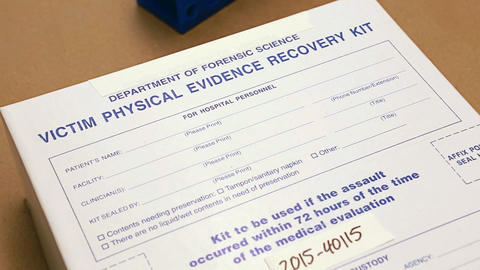
OSAC is looking for qualified applicants to serve on its new Forensic Nursing Subcommittee. An initial aim of this subcommittee will be to develop a standard sexual assault kit. In addition, the Forensic Nursing Subcommittee will draft standards for sexual assault examinations, for developing and validating new methods, and for training and continuing education of practitioners. While the subcommittee will initially focus on adult victims of sexual assault, future efforts may expand to elder abuse, child abuse and human trafficking.
Experts in the following areas are encouraged to apply through August 25, 2021:
- Trained forensic practitioners (nurses, nurse practitioners, forensic medical practitioners, physicians, physician assistants, etc.);
- Law enforcement personnel with experience investigating sexual assaults;
- DNA examiners with experience processing sexual assault kits;
- Toxicologists with experience analyzing drug-facilitated sexual assaults;
- Representatives from sexual assault victim services organizations and advocacy groups;
- Quality managers;
- Human factors experts;
- Experts on bias and ethics;
- Legal experts; and
- Statisticians.
For more information on the Forensic Nursing Subcommittee, the application process, and selection criteria, visit the OSAC website.
Want to Make an Impact? Apply to Join OSAC!
Along with the Forensic Nursing Subcommittee, OSAC is currently seeking to fill member vacancies on all of its subcommittees and FSSB Resource Task Groups due to a number of membership terms that will be expiring this September.
The success of OSAC’s efforts to facilitate the development of high-quality standards and promote the use of those standards by the forensic science community depends on the collaboration and dedication of volunteers like you.
If you want to participate in the standards development process and make an impact on the forensic science community, apply to join OSAC by August 30, 2021. Email forensics [at] nist.gov (forensics[at]nist[dot]gov) with any questions. New membership terms begin on October 1, 2021 and for those applicants not selected, they will remain in our application database for three years and be eligible for future membership and affiliate positions.
OSAC's Fire & Explosion Investigation Subcommittee Publish New Technical Guidance Document

OSAC’s Fire & Explosion Investigation Subcommittee has published a technical guidance document, Strengthening Fire and Explosion Investigation in the United States: A Strategic Vision for Moving Forward, that describes recommendations for improving the practice of fire investigation.
Learn more about this technical guidance document and hear from Craig Beyler, Chair of OSAC’s Scene Examination Scientific Area Committee and Philip Crombie, Chair of the Fire & Explosion Investigation Subcommittee, about its benefits for the discipline.
OSAC Holds Second Stakeholder Outreach Meeting
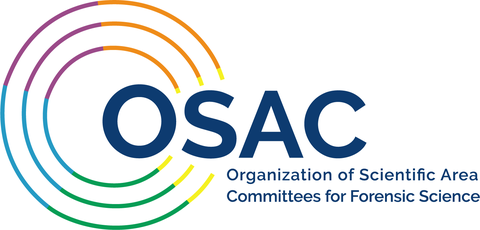
OSAC held its second Stakeholder Outreach Meeting on May 27, 2021 with forensic laboratory leaders and other key decision-makers providing forensic services. Twenty-eight leaders representing federal, state, local, and private organizations from across the country participated in facilitated discussions to share their thoughts and identify opportunities for improvement related to forensic testing, standardization, and quality management.
The collective feedback gathered from the two-hour meeting was extremely valuable and will be used to help identify future collaboration opportunities with OSAC stakeholders as well as inform OSAC’s future plans and priorities. Read more about the discussion topics and key takeaways from this meeting in the Stakeholder Outreach Summary Report.
OSAC Registry Updates
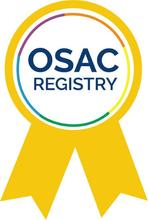
Registry Additions: Q3 FY 2021
OSAC added nine standards to the OSAC Registry in FY 2021 Q3 (April 1 – June 30). These included the following five SDO published standards, along with the first four OSAC Proposed Standards.
SDO Published Standards:
-
ANSI/ASB Best Practice Recommendation 068, Safe Handling of Firearms and Ammunition, First Edition, 2020 (added April 6, 2021).
-
ASTM E3197-20 Standard Terminology Relating to Examination of Fire Debris (added April 6, 2021).
-
ANSI/ASB Standard 018, Standard for Validation of Probabilistic Genotyping Systems, First Edition, 2020 (added May 4, 2021).
-
ANSI/ASB Best Practice Recommendation 021, Best Practices for the Preparation of Test Impressions from Footwear and Tires, First Edition, 2019 (added May 4, 2021).
-
ASTM E3245-20e1 Standard Guide for Systematic Approach to the Extraction, Analysis, and Classification of Ignitable Liquids and Ignitable Fire Debris Samples (May 4, 2021).
OSAC Proposed Standards:
- OSAC 2021-N-0001, Wildlife Forensics Method-Collection of Known DNA Samples from Domestic Mammals (added April 6, 2021).
- OSAC 2020-N-0007, Best Practice Recommendations for the Management and Use of Quality Assurance DNA Elimination Databases in Forensic DNA Analysis (added April 6, 2021).
- OSAC 2020-S-0002, Physical Stability of Facial Features of Adults (added June 1, 2021).
- OSAC 2020-S-0004, Standard for Interpreting, Comparing and Reporting DNA Test Results Associated with Failed Controls and Contamination Events (added June 1, 2021).
To access all 65 standards listed on the OSAC Registry, visit the OSAC website. OSAC encourages the forensic science community to implement these SDO published and OSAC Proposed Standards into their everyday practice.
Click here to see and provide your feedback on the latest forensic science standards open for comment at SDOs and under consideration for the Registry.
OSAC Registry Implementation Corner
OSAC Registry Implementation Survey: Your Input Needed

On June 10, 2021 OSAC released a survey to forensic service providers across the country to better understand the current state of OSAC Registry implementation and what support is needed to improve it. The survey is intended to be a yearly snapshot and assessment, and this first one focuses on 46 standards that have posted on the Registry through March 2021.
We need to hear from the nation’s forensic science service providers! Please help us by completing this survey and join the over 100 participants who have already provided responses.
The Registry Implementation Survey deadline has been extended to August 31, so there’s still time to share your feedback!
For more information and to preview and print a PDF version of the survey, visit the OSAC Registry Implementation Survey webpage.
OSAC Registry Implementers
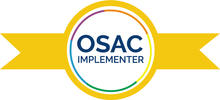
Want to know which forensic science providers have benefited from the OSAC Registry? Check out these stories and press releases highlighting the efforts of some recent OSAC Registry Implementers.
Miami-Dade Police Department Forensic Services Bureau Awarded OSAC Registry Implementer Certificate
Courtesy of Mark Stolorow, OSAC Program Office
The OSAC Program Office awarded an OSAC Registry Implementer Certificate to the Miami-Dade Police Department Forensic Services Bureau on May 19, 2021. Part of the strategic initiative undertaken by Commander Stephanie Stoiloff and her Quality Assurance Manager included evaluating the standards posted on the OSAC Registry, completing a gap analysis, and assessing their laboratory’s conformance with applicable standards. As a result, Commander Stoiloff and her quality management team have implemented the standards relevant to their forensic science operations. In May, Commander Stoiloff completed the OSAC Standards Implementation Declaration Form and forwarded it to the OSAC Program Office. The Forensic Services Bureau was subsequently awarded its certificate.
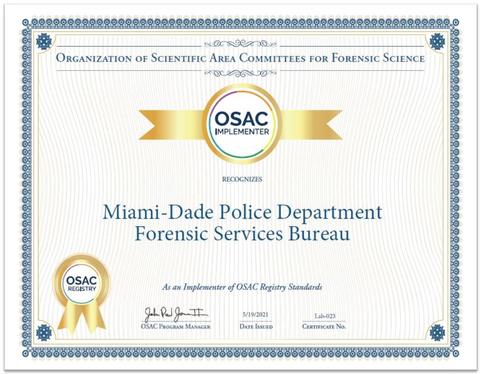
Commander Stoiloff has long been an active supporter of the development and implementation of standards in forensic science, both within her own agency, statewide, and nationally, working with professional forensic science organizations, professional law enforcement organizations and the criminal justice community. In describing her support for the mission of OSAC to facilitate the development and implementation of forensic science standards, Commander Stoiloff emphasized “In response to the recommendation to improve the quality of standards as cited in the 2009 NAS Report, ‘Strengthening Forensic Science in the United States - A Path Forward,’ it was critically important that high quality standards be written by and for forensic scientists. OSAC is facilitating the development of high-quality standards that are consensus-based and technically sound to address the need to improve the practice of forensic science.”
Congratulations to the Miami-Dade Police Department Forensic Services Bureau for its achievement!
Phoenix Police Department Crime Laboratory Awarded OSAC Registry Implementer Certificate
Courtesy of Jody Wolf, Crime Laboratory Administrator, Phoenix Police Department Laboratory Services Bureau (LSB)

Becoming an OSAC standards implementer was easier than anyone on our team imagined. Since OSAC’s original development and subsequent progress, members of our laboratory have been involved in and supportive of the OSAC activities to improve the practice of forensic science. However, when it came to considering whether we would be able to adopt and implement those standards, our team was concerned it would be really challenging, cost prohibitive, and time consuming. Even with those concerns, our team recognized it was important to answer the question, “Would it be possible?” And, thus began our journey to become an OSAC standards implementer.
Our laboratory is a full-service forensic laboratory accredited by ANAB to ISO/IEC 17025:2017 and provides services in the following major areas: Crime Scene Response, Evidence Screening, Latent Print Comparison, Forensic DNA, Firearms, Controlled Substances, Toxicology, and Trace and Fire Debris analysis. We are committed to providing the highest quality forensic science services to our community with integrity, innovation, and impartiality. In pursuit of this mission, we participate in a strategic planning process where we identify various strategic objectives that prioritize our activities and provide a road map to achieve this mission. About two years ago, our leadership team formalized this commitment through the following strategic objective, “The LSB is committed to impartiality, integrity, and innovation by implementing the best scientific and quality assurance practices, fostering accountability, and pursuing transparency for our stakeholders.”
With this goal in mind, our team identified several activities including an evaluation and implementation of the OSAC standards. Our Quality Assurance team developed a process which includes monitoring standards as they move through the OSAC process and when available are distributed to the various sections for review and evaluation. The intent is to identify those standards that can be implemented in full, those that can be implemented partially, and those that are not applicable to our operations. If any resources are needed to fully implement the standard, then those resources are also documented as a part of the review process and can inform future grant or capital expenditures. We have used Qualtrax to facilitate this process and it has made documenting this review very easy. In total, we have implemented 21 OSAC standards as follows: Forensic DNA-4, Fire Debris-3, Firearms & Toolmarks-1, Controlled Substances-2, Toxicology-4, Trace Evidence-5, and Lab-wide-2.
Over the course of this journey, we realized our operations already complied with most of the standards we were reviewing. The effort to conduct the reviews was minimal as the standards available for review were spread out across many of our disciplines. These factors made what was originally a daunting task a very feasible accomplishment. Additionally, it has helped to identify resources needed to address any gaps identified. Our journey has been very rewarding, and we have learned so much more about our operations. This process further validated our commitment to quality, and we will remain engaged as OSAC continues to contribute to our profession.
Georgia Bureau of Investigation Crime Laboratory Recognized for Implementing National Science Standards
The Georgia Bureau of Investigation (GBI) Crime Laboratory was the first laboratory to self-declare their implementation of standards on the OSAC Registry. The GBI Headquarter lab in Atlanta received the first OSAC Implementer Certificate in October 2019, and since then six other regional labs declared their use of standards representing the lab’s trace evidence, drug identification, and impressions sections. Learn more in their press release.
Miami Valley Regional Crime Laboratory Adopts Additional National Standardization Procedures
Miami Valley Regional Crime Laboratory (MVRCL) is the first and only lab in Ohio to be recognized as an OSAC Registry Implementer. MVRCL has implemented the Registry standards related to biology/DNA, firearms and toolmarks, medicolegal death investigation, seized drugs, toxicology, trace evidence and interdisciplinary topics. Read more about MVRCL’s implementation efforts in their news release.
Wisconsin State Crime Laboratories Awarded OSAC Registry Implementer Certificate
The Wisconsin Department of Justice Division of Forensic Services issued a press release on July 1, 2021 announcing the award of OSAC’s Registry Implementer Certificate to all three Wisconsin State Crime Laboratories (WSCL). You can also read about WSCL’s implementation journey in OSAC’s Spring 2021 Newsletter.
Costa Rica Forensic Science Laboratory Achieves Recognition by OSAC
The Department of Forensic Sciences of the OIJ is the first international implementer of the standards on the OSAC Registry in areas of toxicology, ballistics, and ISO 21043-2. Read their press release here (translation provided by Microsoft Word Translator).
Has your organization started on its implementation journey?
Let us know so we can share your story!
OSAC in the News

Forensic Science Organization to Draft Standards for Sexual Assault Examinations
NIST announced OSAC’s new Forensic Nursing Subcommittee, along with information about the application process and selection criteria for members. This press release was also reshared in Forensic Magazine, Evidence Technology Magazine, Crime Scene News, and AAFS Academy Newsletter.
Advancing the Practice of Forensic Science in the United States – The Role of Forensic Science Standards
Beginning on page 102, this journal article in Forensic Science Review talks about the establishment of OSAC and its role in facilitating the development of forensic science standards.
Houston Forensic Science Center July 2021 Newsletter
Best practice documents drafted by OSAC’s Friction Ridge Subcommittee are mentioned on page four as a basis for HFSC as it looks to improve communication, turnaround time, and the request process for latent print analysis.
Forensic Technology: Algorithms Strengthen Forensic Analysis, but Several Factors Can Affect Outcomes
A report from the U.S. Government Accountability Office (GAO) on the key performance metrics, strengths, challenges, and policy options for forensic algorithms. This report mentions OSAC’s efforts in drafting standards for training and certification in the friction ridge and facial identification disciplines.
Houston Forensic Science Center June 2021 Newsletter
HFSC talks about its implementation journey and its latest compliance to 11 standards listed on the OSAC Registry on page three of its June newsletter.
Accuracy and Reproducibility of Conclusions by Forensic Bloodstain Pattern Analysts
This journal article in Forensic Science International references the terms and definitions standard developed by OSAC’s Bloodstain Pattern Analysis Subcommittee.
OSAC & Other Forensic Science Events

August 2021
22-26: ASCLD Annual Symposium
26: OSAC Crime Scene Investigation & Reconstruction Subcommittee Meeting (virtual)
30-9/2: OSAC Ignitable Liquids, Explosives, & Gunshot Residue Subcommittee Meeting (virtual)
31: OSAC Leadership Strategy Session (virtual)
September 2021
8-9: FSSB Quarterly Meeting (virtual)
29: OSAC Public Update Meeting (virtual)
30: Last day to provide input on CSAFE’s Learning Opportunity Survey! Share your feedback on how you prefer to consume learning new technologies, research studies and statistics.
October 2021
12-15: AFQAM Annual Training Conference
November 2021
1-5: OSAC Scene Examination SAC and Physics/Pattern Interpretation SAC Meetings (Orlando, FL)
1-5: Northeastern Association of Forensic Scientists (NEAFS) Annual Meeting (Newport, RI)
December 2021
6-10: OSAC Medicine SAC and Digital/Multimedia SAC Meetings (Orlando, FL)
January 2022
24-28: OSAC Biology SAC, Chemistry: Seized Drugs & Toxicology SAC, and Chemistry: Trace Evidence SAC Meetings (location to be determined)
Professional Organization Spotlight
The Association of Forensic Quality Assurance Managers
By Chris Krug, FSSB AFQAM Representative
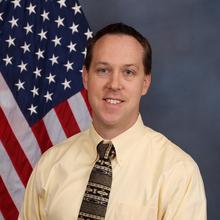
The Association of Forensic Quality Assurance Managers (AFQAM) promotes standardized practices and professionalism in quality assurance management for the forensic community. Its vision is to support and enhance quality assurance practices, to provide the criminal justice system with the highest quality of laboratory results and service and to advocate for forensic quality assurance standards. Since its founding in 2001 with 22 members, the organization has grown to approximately 250 members representing the United States and the international forensic community. Members are from all levels of government laboratories, as well as private forensic laboratories, national/international forensic accrediting bodies, proficiency test vendors and additional organizations that are dedicated to advancing forensic quality assurance.
AFQAM members receive many benefits critical to anyone responsible for the review, development, and maintenance of a forensic laboratory management system. AFQAM members are part of an engaged and active community that supports each other through shared collective knowledge, training, and resources via monthly webinars, a members-only website, and discussion forum. The discussion forum gives members access to 250 other experts who often provide real-time information based on their experience, knowledge, and opinions. A robust resource library provides on-demand access to sample policies and forms on a variety of topics. Members also receive American Society for Quality (ASQ) membership, granting access to their website and vast library of resources and discounted training. The annual conference always provides important professional development and networking opportunities for anyone with quality assurance responsibilities in a forensic laboratory.
From AFQAM’s inception, the organization has been committed to activities that support quality and standardization within forensic laboratories. The AFQAM bylaws include the following organizational objectives: promotion and provision of quality assurance support, striving to ensure the criminal justice community receives forensic services which meet the highest standards of quality, and advocating for forensic science quality assurance standards. The AFQAM Outreach and Advocacy committee is particularly important toward these objectives. One responsibility of this committee is to advocate for and participate in quality assurance related activities, working groups, and committees in the forensic science community. As a part of this commitment, AFQAM has been an active member of the US TAG to ISO TC 272 in support of the development of forensic science standards for the international community.
The nature of the job responsibilities of AFQAM members, and the alignment of the objectives of OSAC and AFQAM make for a natural collaboration in development and implementation of standards for forensic science. Since the start of OSAC, AFQAM members have served on what was formerly the Quality Infrastructure Committee, and members continue to serve throughout all levels of the organization. AFQAM has actively supported OSAC activities by encouraging all members to be involved in the standards development process and sharing strategies for implementation. Members are regularly made aware of current standards developing activities and other opportunities to contribute. AFQAM identified this as a critical task because the documents that are generated by OSAC and end up on the Registry will likely have to be incorporated by AFQAM members in their organizations in the future.
More information about AFQAM and how to become a member can be found at: https://www.afqam.org/.
NIST Foundations & Research Activities
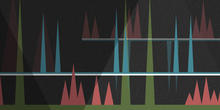
NIST Publishes Review of DNA Mixture Interpretation Methods
NIST has published DNA Mixture Interpretation: A Scientific Foundation Review which reviews the methods that forensic laboratories use to interpret evidence containing a mixture of DNA from two or more people. The draft is open for public comment until August 23, 2021.

Handwriting Examiners in the Digital Age
Forensic handwriting examiners authenticate handwritten notes and signatures – or reveal them to be fakes – by analyzing distinctive features in our writing. As people write less by hand, will handwriting examination become irrelevant?


